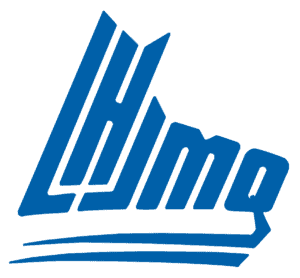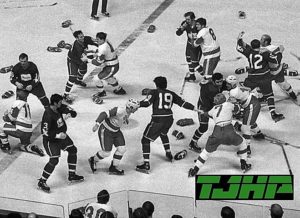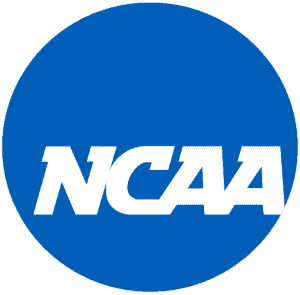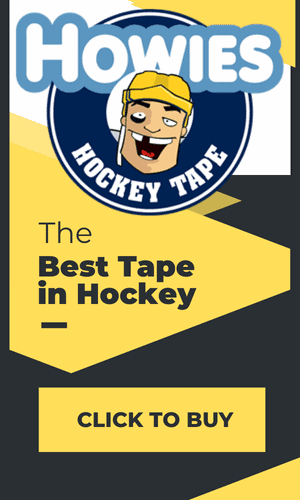Lessons From Junior Hockey
U20 or Junior Hockey in North America is a level above Midget hockey that is tailor made for college placement and professional exposure. This is the widest gap and age range for athletes competing in amateur hockey, and comes with it a large expanse of skill levels and abilities. Most of my hockey coaching career has been focused on this level. Different teams, organizations, evolving leagues and affiliations… Junior hockey is an ever changing landscape.
In this section we will explore some of the lessons I have learned from coaching at this level, and some helpful tips to get the most out of your athletes. This level is a crucial piece to the player advancement model, and when done right by organizations and coaches, can be a life changing experience.
- Tiers and Levels
The USHL is the only Tier I Junior Hockey league in the United States. The NAHL is the only Tier II Junior Hockey League in the US, but many Canadian leagues share the Tier II distinction including the BCHL, AJHL, SJHL, OJHL, and CCHL. Tier III in the United States is the NA3HL, and the rest of the leagues are self-defining, meaning they operate outside of USA Hockey. These leagues include NCDC, EHL, USPHL Premier and Elite, and EHL Premier. Canada also has Jr. B and Jr. C hockey, as their Tier Scheme goes from Major Junior (OHL/ WHL/ QMJHL) to Jr. A (Tier II), and so on down.
When evaluating USHL, NAHL, BCHL, and the AJHL, these leagues are for the extreme top of the pyramid players between 16-20. You are tendered or drafted into these leagues, and selected based upon months and years of scouting and evaluation… not likely a 3 day Pre- Draft or Invite Camp.
All the other leagues are primarily NCAA Division II and Division III placement leagues, and under this criteria, you as the athlete hold the power to choose the program that fits best for you. Are you looking to be in a certain geographic region? Do you like the coach? Are you looking for a particular training schedule or ice time development model? What are your price concerns and how can you pay for this? All of these leagues (NCDC, EHL, CCHL, USPHL Premier etc) all carry fees and are not without expense, even if they may advertise themselves as tuition free.
You as the parent and the player need to evaluate the best fit for your own individual goals, and not chase after a label, because your performance will be the greatest determining factor if you look to move onto higher levels of hockey.
As a coach at this level, it is important to recognize that you may not always get the greatest buy-in with this age group. Many players enter this level looking at it as a bridge (for a year or two) onto another level with a longer time commitment. Junior Hockey is the pathway to college hockey, so recognize this and do more to create the positive buy-in and accountability with your group in order to make the season successful.
Some of these ideas include:
- Code Meetings during Training Camp
- Zoom Calls with College and Pro Coaches
- College Campus Tours
- Community Service initiatives
These athletes at this level need to know that you are looking out for their best interests and working to help make them successful and to reach their goals in the sport. If you are not doing that, there are a lot of leagues out there and the players at the pay-to-play level will be looking to move to a program that does promise them those opportunities.
- Coach or Recruiter? Am I signing up to be cut?
Segueing off the previous paragraph, parents and players will be looking at previous rosters when choosing your program, and word of mouth, how you are viewed by the hockey marketplace will go a great long way on deciding the talent on your roster.
Are you a coach who brings in 50 players to the team and cuts a large portion or sells players to other teams? Do you make promises that you don’t keep? Do you actively advocate on behalf of your players and work hard to help them get to college, or do you try to keep them in your program for their entire Jr career?
Parents will do research and see if you are a coach who tells the truth. Kids… they will want to play for winning organizations. If you can find a way as the coach to combine these two elements- Placement and Winning- you can have a long career in Junior Hockey, and you will be remembered by your players for all the positives that you provided- Honesty, Development, Culture and much more.
Plato said, “He who is not a good servant will not be a good master.” Work for your athletes, not just with your athletes. Holding them accountable for their play is different than cutting them immediately and bringing in players to replace them. The best Junior coaches at this level look for the unsharpened raw material hidden within many players and work to sculpt and mold that player to reach their potential.
- Systems and Strategy
Develop presentations, playbooks, handouts and more to articulate to your athletes at this level the systems that you are implementing. Spend time, create video, and dive deep into what you are looking to do on:
- Play without the Puck- Forechecking, Backchecking and Defensive Zone Coverage
- Playing with Puck- Zone Exits and Zone Entries
- Code of Conduct
- Style of Play
- Special Teams- PP/ PK
- 4 on 4 / 3 on 3
- And more
Winning is about having the whole team on the same page.- Bill Walton
Training Camp is a valuable commodity, and setting a plan for the 2 to 3 weeks allotted for this time will pay off significantly as the season goes on. Training Camp is not just about Team Building, Workouts, and On Ice practices, it also is a place where kids can go back to mentally and know that the coach and program has a plan for their success. Players at this level are still very literal. If you want something accomplished, you have to be direct, illustrative, and communicate your goals sincerely and with purpose.
A common mistake among those who work in sport is spending a disproportional amount of time on “x’s and o’s” as compared to time spent learning about people. Mike Krzyzewski
Pivotal to this Training Camp time is also setting aside time for individual player meetings. Every coach operates and communicates differently, but you should find a time and place that works for you to get feedback from each and every kid, strengthening the relationship your building with the athlete, and find out where he wants to go to school, what he wants to study in college, family/home life, where he views himself on the team, and much more. This feedback will be extremely important down the road when you want to get them to college and are talking to coaches about him. It will also help him greatly to know that his coach views him as an individual and important part of this broader concept of team. Show them you value them, and they will value you more.
- The Billet Life
“Billeting” is a hockey tradition and is especially important at the junior level of hockey. This concept involves local host families providing a home to out-of-state or out-of-country players for the hockey season. The billet program also allows these young men to complete their high school educations, take college preparatory classes, obtain part-time employment and/or volunteer in the local community while pursuing the next step in their hockey careers.
As the coach for your Junior team it is extremely important to have a line of open communication between the host families housing your athletes. Billets are an incredibly valuable commodity in Junior Hockey, and one bad experience, or one bad player can turn off that host family (and their friends and relatives) from ever hosting again.
If your program has a host family coordinator, make sure that to keep the line of dialogue open. Reach out through email to all host families and introduce yourself. Let them know the type of behavior that is acceptable in your program, and be pro-active in communication. Create events like a host family appreciation night to say thank you and know that they are valued.
In my previous book “Lessons from Dad”, I describe in the chapter “The House Guest” about my father and his opening of my childhood home to players, coaches, and friends, and how it shaped me. How many of the relationships that my Dad started, just by offering people a meal or place to stay, have remained an integral part of my life for the better part of my 44 years.
Foster healthy relationships with your community and demonstrate appreciation for all the network of people who make your Junior hockey team or program successful. It goes a long way towards a successful season.
- Creating an Ideal Experience
What is your Junior program all about. What is its story? The coach of the Junior team wields great power and influence in making decisions for this club. What does he want the practice schedule to look like? The game schedule? Workouts? Community Service, college credits, school, team building and marketing events… these all play a role in creating the best case experience for your 16-20 year old Junior Hockey player.
Create a vision and a template for your program based upon a player- first philosophy that focuses on developing these players, improving their abilities and marketing them to colleges or the next level in their careers.
Your Junior Hockey will most likely not have the skilled players and resources of the USNTDP, but you can work within the framework you create to make it the pinnacle and top team within your Youth Hockey Organization. What is the NTDP?
The National Team Development Program is the pinnacle of USA Hockey’s amateur player development program. The NTDP scouts and selects the top 22 players in two age groups (Under-17 and Under-18) to train and develop in a highly competitive environment. USA Hockey National Team Development Program (usahockeyntdp.com)
Use this framework for your program and drill down into what your vision for the program is:
- How often will you practice?
- How often will you work on skills?
- Where, how and when will you do your strength and conditioning?
- How invested will you become in their education and academics?
- Will their be a community service or volunteerism component?
- How often will you do video reviews?
- What will your pre- game meetings and a typical game day look like?
- Assistant Coaches, Trainers, and Game Day personnel, who is hiring them?
Invest the time in creating a structured schedule and model for your Junior program. This experience and how your season will go will hinge (in many ways) the atmosphere you provide and the structure you create. This will show an investment to your parents in your athletes development. It will provide your players a consistent week where they can prepare and build their social, employment and schooling activities, and it will open up time for you as the coach during the week so you can do the things you need to do outside of the rink. Kids thrive on structure. They may like to pretend they don’t… but they 100% do.
2 Small Area Games for the U20 or Junior Levels
Huntsville 3 v 3
Use the center ice circle. Players outside circle cant go inside and players inside circle cant cross the redline or go outside the circle. Focus on quick decisions, puck movement and shots from good angles. Pucks go out of playing area, new pucks come from coach. Fun game.
Sweden 4 v 2 PP/PK Game
Focus of game is getting possession of the puck, keeping it and scoring with the man advantage. 2 v 2 turns into a 4 v 2 when team earns possession of the puck. Players involved with the original 2v2 can go anywhere in neutral zone, added players (2 extra) can only go on their side of the red line. Score, and you keep the puck (breaking out from behind your own net). Other team misses net, you get a new puck from your own end and keep man advantage. Play till whistle. New 2 v 2 every minute.











